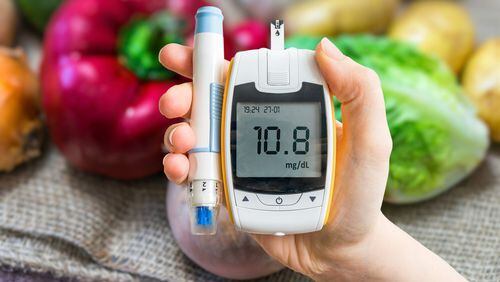My recent column about diabetes generated some questions from readers:
Merry, a health educator, questioned my mention of a study in Britain that found a particular pattern of eating — a high intake of vegetables and fruit with limited sugar, white bread and French fries — was associated with a lower prevalence of type 2 diabetes.
“Is this correct?” she wrote. “I am unfamiliar with any diet that lowers the prevalence of type 2 diabetes while eating white bread and French fries.”
Sorry for the confusion, Mary. To clarify, this study found that diets rich in vegetables and fruit and with limited amounts of sugar, white bread and French fries were associated with a lower risk for type 2 diabetes. In other words, eating less sugar, white bread and French fries helped lower the risk for type 2 diabetes.
Jerry from Austin writes, “My doctor has diagnosed me as a borderline diabetes patient. Please advise.”
My advice? Get thee to a Diabetes Prevention Program, aka DPP. This is a national education program specifically geared to people like yourself who have “pre-diabetes” — blood sugar numbers that are abnormal but not high enough (yet) to be diagnosed as type 2 diabetes.
Because this program has been so successful at helping people with prediabetes to prevent or delay the development of type 2 diabetes, it will become a covered benefit under Medicare Part B beginning in January 2018. Yay!
Ask your doctor or diabetes educator for information about this program in your state. Or go to https://www.cdc.gov/diabetes/prevention/index.html.
Sara, a physician assistant who works with children with type 1 diabetes, felt that my recent column — which mentioned news about type 1 as well as type 2 diabetes — could mislead people about the clear distinct differences between these two type of diabetes. “Type 1 diabetes is an autoimmune, non-preventable, non-curable disease that does not go away,” she stressed.
Sorry for anything that appeared misleading, Sara. Type 1 and type 2 diabetes are definitely different. In type 1 diabetes, the body turns on itself and destroys the cells that make insulin. People with type 1 rely on multiple shots of insulin daily to survive.
People with type 2 diabetes produce insulin but their body is “resistant” to its effects. Over time, some people with type 2 diabetes may eventually need shots of insulin as well.
At this time, we don’t know how to prevent type 1 diabetes. Type 2, however, can sometimes be prevented by changes in lifestyle such as increased exercise, weight loss and changes in diet.
While we still cannot cure diabetes, many of the nutrition recommendations for this disease — all types — are similar. People with type 1 must be especially careful to match their insulin injections with their food intake and exercise. People with type 2 can often control their disease with weight loss and exercise. And for all types of diabetes, maintaining blood sugar levels in a normal range is the best way to control or prevent all the dangerous complications of this disease.
Thanks for writing.
———
(Barbara Quinn is a registered dietitian and certified diabetes educator affiliated with Community Hospital of the Monterey Peninsula. She is the author of "Quinn-Essential Nutrition" (Westbow Press, 2015). Email her at to barbara@quinnessentialnutrition.com.)
About the Author






